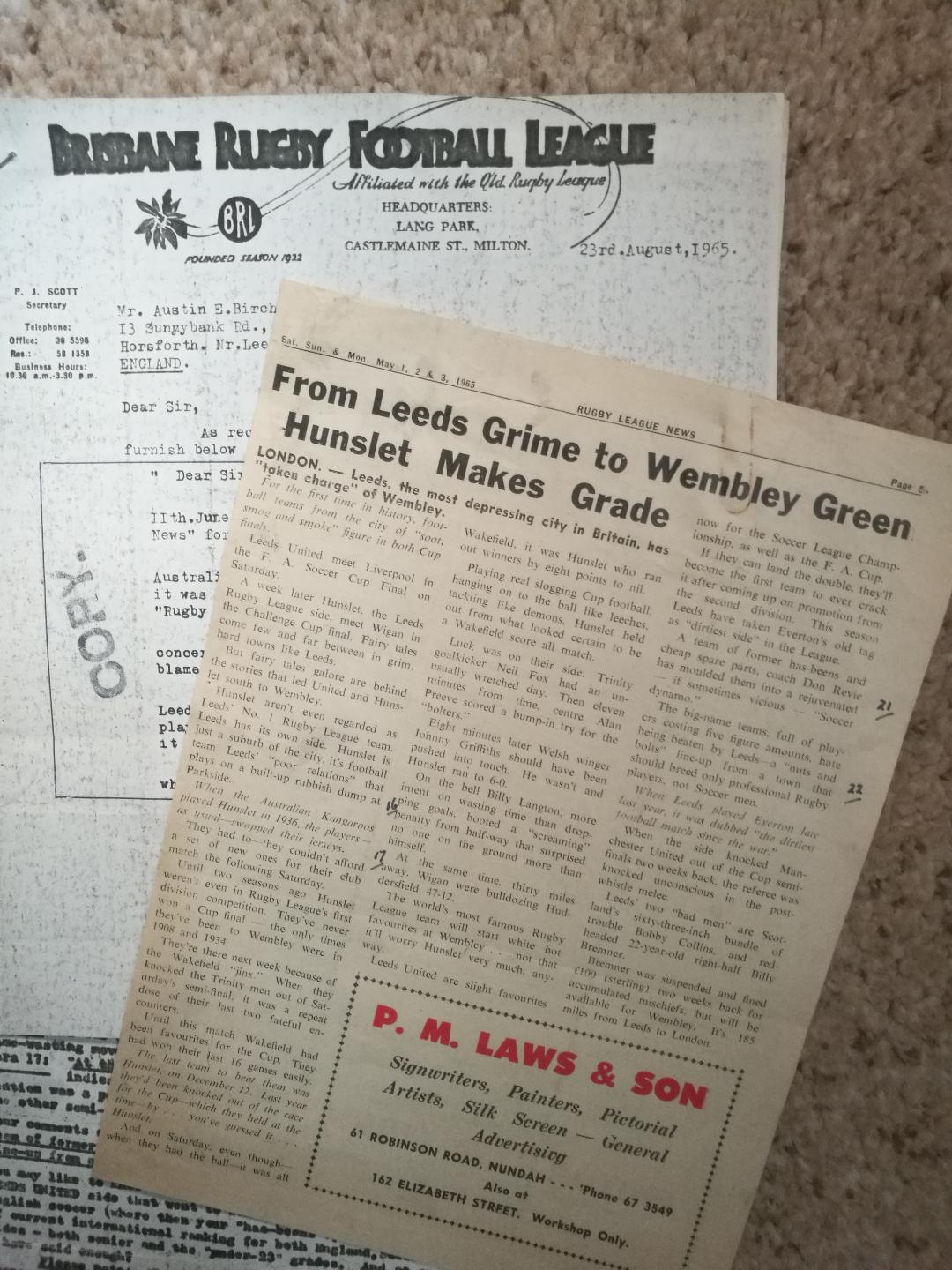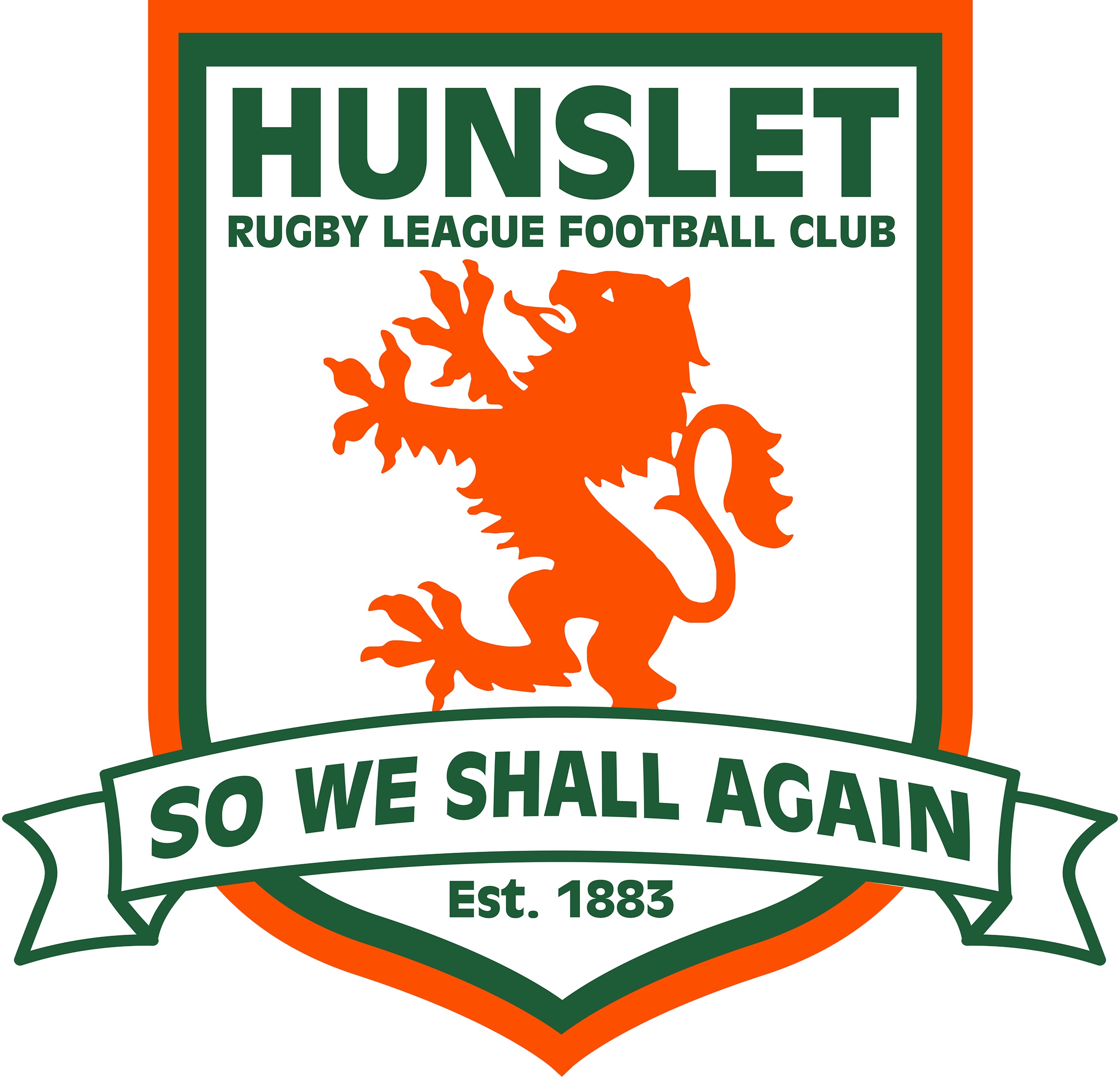In other words, according to the city surgeon in the 19th century, Leeds stank from the smells coming off the corpses in the overcrowded burial grounds. Horace Walpole, visiting in 1756, said Leeds was “a dingy town.”
So what’s this got to do with Rugby League and Hunslet? Well, thanks to Steve Calline, I have a copy of a page from Rugby League News, an Australian paper, dated May 1965 whose headline is “From Leeds Grime to Wembley Green Hunslet Makes grade.”
It seems that our reputation as a filthy place hadn’t been challenged for 200 years. It got worse – “the most depressing city in Britain” was the strapline. Cheek! You’ll remember that 1965 was when Hunslet played Wigan in the Challenge Cup, and just the week before, Leeds United played Liverpool in the FA Cup Final – both at Wembley.
“Fairy tales come few and far between in grim, hard towns like Leeds” carries on the anonymous correspondent based in London, who had syndicated his article to a southern English paper. He even implies that in 1936 Hunslet and Australia swopped jerseys after their match because Hunslet couldn’t afford to give theirs away to the Aussies. Also, that we play on “a built-up rubbish dump.” Are you cross yet?
Well, Mr Austin E Birch was very cross and set out to discover who had written the article and to put him straight about Hunslet. Turns out it was an Australian journalist who had written it and it had been reprinted in the Brisbane Rugby News Programme. Not daunted, Mr Birch fired off a letter on his trusty typewriter – remember, this is 1965, no email or word-processors – to Lang Park, Brisbane. Mr Scott replied on behalf of Queensland Rugby Football League, and posted his reply by air mail. That costs more than going by sea, but the reply never arrived. By now, our defender, Mr Birch, was getting crosser and had his repudiating article all ready to go to print if the Aussie journalist didn’t acknowledge all his misrepresentations and faults. Another letter flew across the world and Mr Birch awaited the reply, I’m guessing with bated breath. It was nine weeks before it arrived – must have gone round the world a couple of times, stopping at a few beauty spots on the way.
By now, our hero had sent off his response to the paper. On the charge of “a city of soot, smog and smoke,” Mr Birch says “The city is proud of its parks and open spaces – more per head than for any other centre of similar type…. I wonder if your correspondent is confusing Leeds with Liverpool or Manchester – both of which rate worse than Leeds.” That Parkside was built on a rubbish tip is countered with, “…way back in 1888, when the club moved there, much hard work went into making it a compact, presentable enclosure. …the ground can accommodate upwards of 20,000 people and is as good as most RL enclosures – and a good deal better than several.” The charge that we couldn’t afford two sets of jerseys was laughed to scorn with “too silly for me to waste time contradicting it.” Other factual points were corrected, including the year that the Aussies toured (1937/8), and Mr Birch, under the nom de plume Airedale, won the match by a knockout!
And as to the pongs coming from graveyards – the 1842 Act for Better Lighting, Cleansing, Sewering and Improving the Borough of Leeds, along with Holbeck Cemetery opening as the first municipal cemetery in Leeds in 1857, made all the difference.
Pat Benatmane



